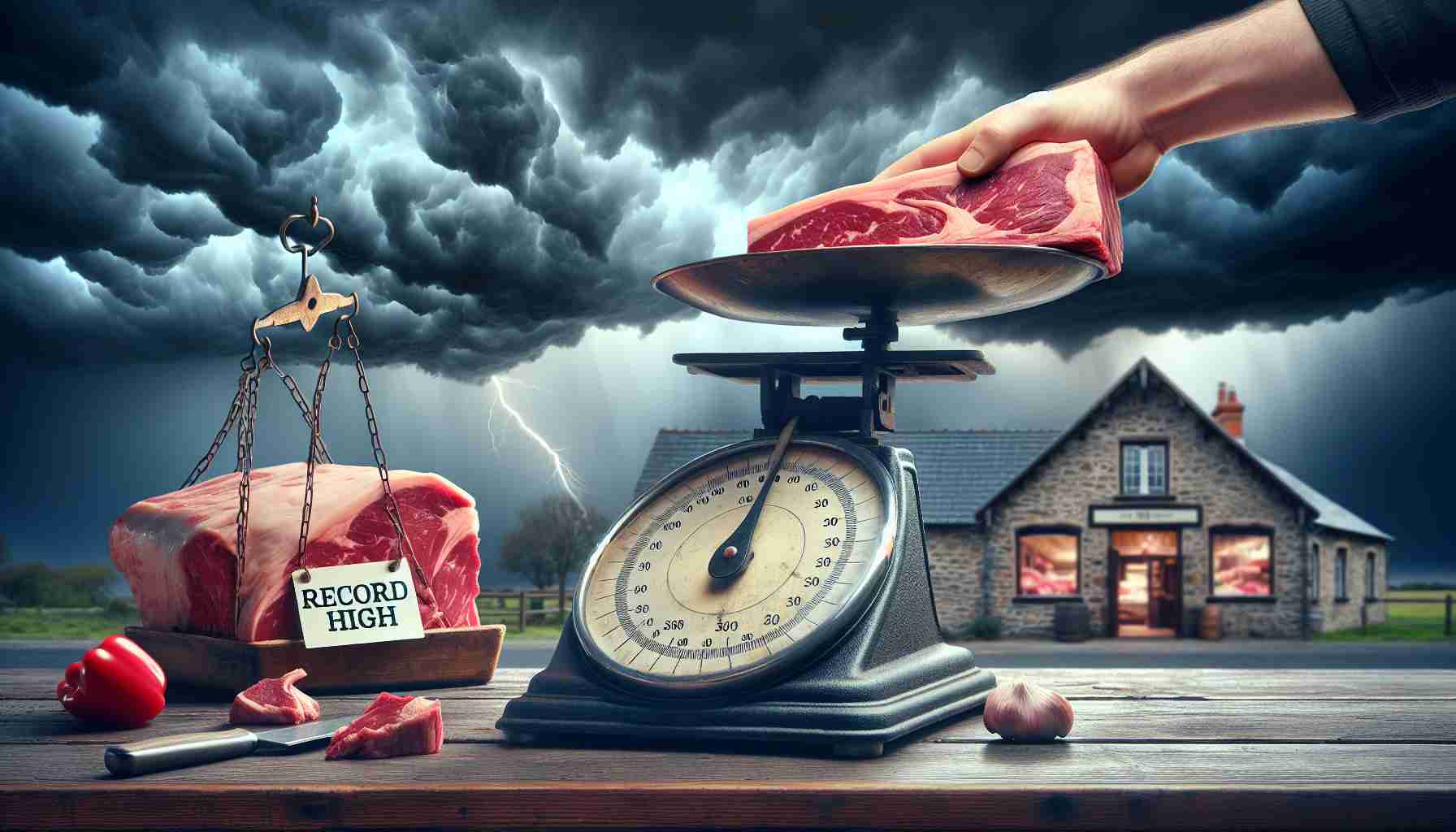The Current State of Canada’s Beef Market
In Canada, the beef industry is witnessing an unprecedented surge in market prices. As producers celebrate this boom, looming U.S. tariffs brought about by political changes cast a shadow of uncertainty over the sector. Experts in the field, including a notable figure from the Livestock Markets Association of Canada, have reported strong early January marketing, signaling a robust start to 2024.
Current figures from Winnipeg Livestock Sales reveal notable prices for various classes of feeder steers. For instance, 900 to 1,000-pound steers were fetching between $300 and $357 per hundredweight, while lighter steers saw prices soaring even higher. Notably, heifer prices varied but remained slightly lower than steer prices, demonstrating market fluctuations.
The dynamics of these prices can be attributed to the ongoing beef shortage in North America, coupled with favorable exchange rates. However, fears surrounding potential 25% tariffs, as threatened by the U.S. administration, could disrupt this optimistic tide significantly.
As beef prices reach premium levels, some anticipate that beef might transition from a household staple to a luxury item, affecting consumer purchasing habits. Industry experts encourage producers to adapt their strategies to thrive amidst these challenges, urging them to focus on maximizing production to capitalize on current opportunities. Despite potential hurdles, the outlook for the cattle business remains cautiously optimistic, particularly for those involved in cow-calf operations.
The Broader Implications of Canada’s Beef Market Surge
The current inflationary pressures in Canada’s beef market not only affect producers and consumers but also have significant implications for society and the global economy. As beef prices escalate, it could disrupt traditional dietary patterns, pushing many consumers toward more economical protein sources such as poultry and plant-based alternatives. This shift in consumer behavior may subsequently reshape the market landscape, creating an increased demand for alternative proteins, which are seen as more sustainable options.
Moreover, the potential U.S. tariffs could exacerbate existing tensions within North American trade dynamics. Tariffs can lead to retaliatory measures, potentially reducing trade volumes and driving up prices further. This situation not only endangers Canadian beef producers but also puts American consumers at risk of price hikes, revealing how deeply intertwined the economies of these neighboring countries are.
On an environmental front, the beef industry’s fate has far-reaching implications. As prices rise and producers aim to maximize output, increased feeding operations could lead to heightened greenhouse gas emissions and land use challenges. The beef sector is already a significant contributor to methane emissions; thus, any push for higher production levels must be balanced with sustainability initiatives.
Looking towards the future, if the trend continues, we may witness a paradigm shift in how society values and sources its food. The long-term significance could lead to increased regulation around beef production practices, as governments and consumers alike call for more sustainable and ethical farming methods. Addressing these challenges now could foster resilience against future market fluctuations and environmental concerns.
Canada’s Beef Market Boom: Opportunities and Challenges Ahead
The Current State of Canada’s Beef Market
Canada’s beef industry is experiencing a significant surge in market prices, driven by a confluence of factors that are reshaping the landscape for producers and consumers alike. As producers take stock of their prospects in 2024, they face both promising opportunities and serious challenges that could impact the future of the sector.
Prices on the Rise
Recent data from Winnipeg Livestock Sales indicates that the prices for feeder steers have skyrocketed, with weights of 900 to 1,000 pounds commanding between $300 and $357 per hundredweight. Lighter steers are seeing even higher prices, while heifer prices, although slightly lower than those for steers, illustrate the market’s overall upward trend. This robust pricing environment reflects a growing demand alongside a notable shortage of beef in North America, affecting supply chains and pricing strategies.
Market Dynamics
The ongoing shortage of beef has been a central theme contributing to these rising prices. Factors such as a favorable exchange rate have also played a role, creating a more lucrative environment for Canadian producers selling their beef. However, the looming threat of a potential 25% tariff from the U.S. poses a significant risk. Experts warn that such tariffs could drastically alter trade dynamics, increasing costs for Canadian beef exporters and ultimately affecting consumer prices domestically.
Potential Consumer Shift
As prices approach premium levels, there is growing speculation that beef may transition from being a household staple to a luxury item. This shift could fundamentally change consumer purchasing habits, prompting households to either reduce consumption or seek alternative protein sources. The industry’s reliance on exports could further complicate matters, as tariff implications might see a decrease in beef exports across borders.
Strategic Adjustments for Producers
Given these evolving market conditions, it’s imperative for producers to adapt their strategies. Many experts suggest that maximizing production efficiency will be crucial to capitalizing on current market opportunities. Producers are being urged to focus on innovative practices, such as improving livestock genetics and enhancing feed efficiency, which can lead to better yield and profitability.
Outlook for Cow-Calf Operations
The future remains cautiously optimistic, especially for those engaged in cow-calf operations. These producers are well-positioned to benefit from rising prices, provided they can navigate market uncertainties effectively. The stability of the beef supply chain and continued trade relationships will play pivotal roles in sustaining this optimistic outlook.
Insights and Predictions
In conclusion, while the Canadian beef sector currently enjoys elevated market prices driven by both supply constraints and favorable exchange rates, the potential for political tariffs and changing consumer patterns introduces significant uncertainties. As the industry evolves, ongoing assessment of market trends, consumer behavior, and international relations will be critical for producers aiming to thrive in this challenging environment.
For additional information on developments in the beef market, visit the CBC, a reliable source for the latest agricultural news.
